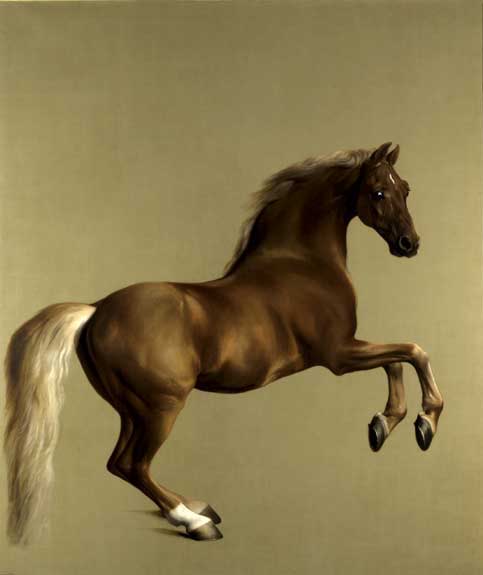Next Saturday being Derby Day, this week’s picture is George Stubbs’s Whistlejacket, the quintessential portrait of the thoroughbred racehorse, fleet of foot and wild of eye. Painted, startlingly, to the scale of life, it was commissioned in 1761 by Charles Watson-Wentworth, 2nd Marquess of Rockingham and briefly Prime Minister of England, to preserve the memory of his pride and joy: a bay colt by Mogul out of an unnamed dam by the Hampton Court Chestnut Arabian. Rockingham’s desire to possess such an unnervingly large and vital image of this particular racehorse may have had something to do with the fact that Whistlejacket had recently defeated the highly rated Brutus in a match at York races, thus winning his lordship the sum of 2,000 guineas – approximately £130,000 in modern money.
According to Stubbs’s contemporary, Ozias Humphry, Whistlejacket did not take kindly to being painted. Humphry recorded that at the last of several outdoor “sittings” for the picture, while a stableboy led him backwards and forwards in front of the artist at his easel, the mettlesome horse suddenly caught a glimpse of his own image. He began to “stare and look wildly at the picture, endeavouring to get at it, to fight and to kick it” until Stubbs had to intervene, pummelling Whistlejacket “with his palette and Mahl stick” until the horse calmed down. The story, which is suspiciously similar to the tale told by Pliny about the ancient Greek painter Zeuxis painting a vine so realistically that birds tried to eat from it, was probably made up. Humphry had a habit of embroidering the truth and it seems unlikely that Stubbs would have painted such a large canvas out of doors, especially at a time when plein air painting was only rarely practiced. But metaphorically if not...


